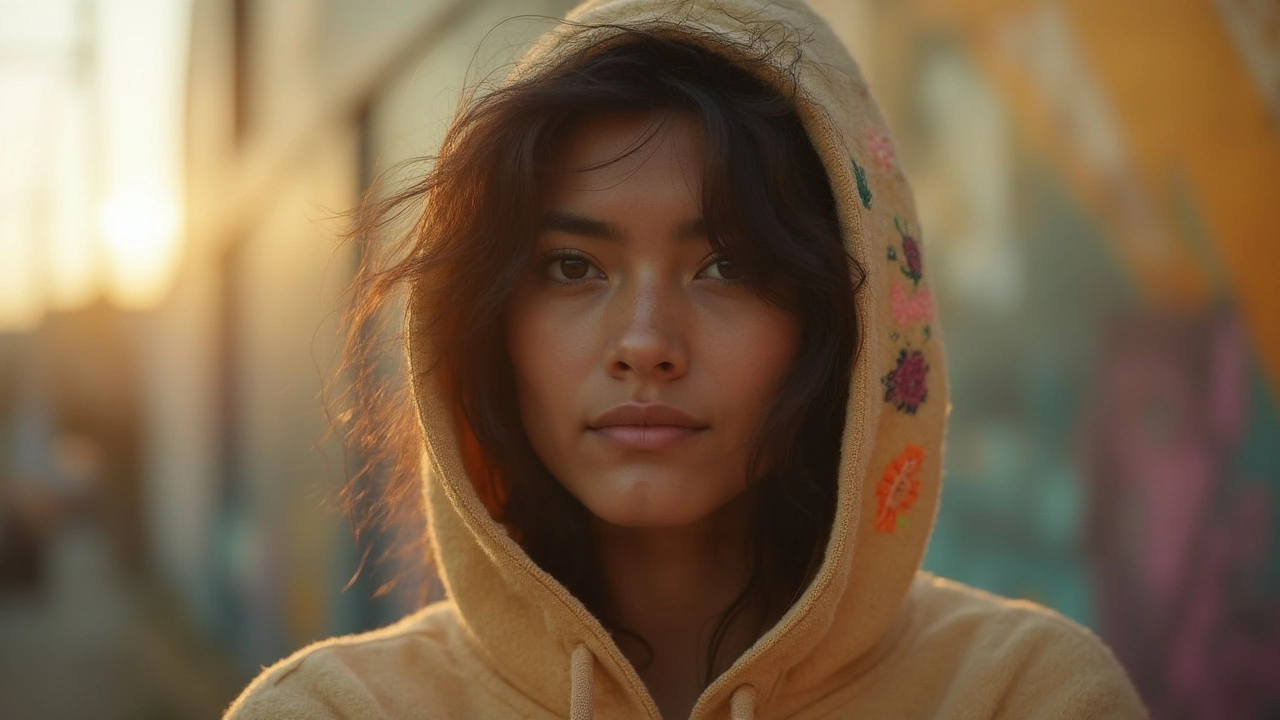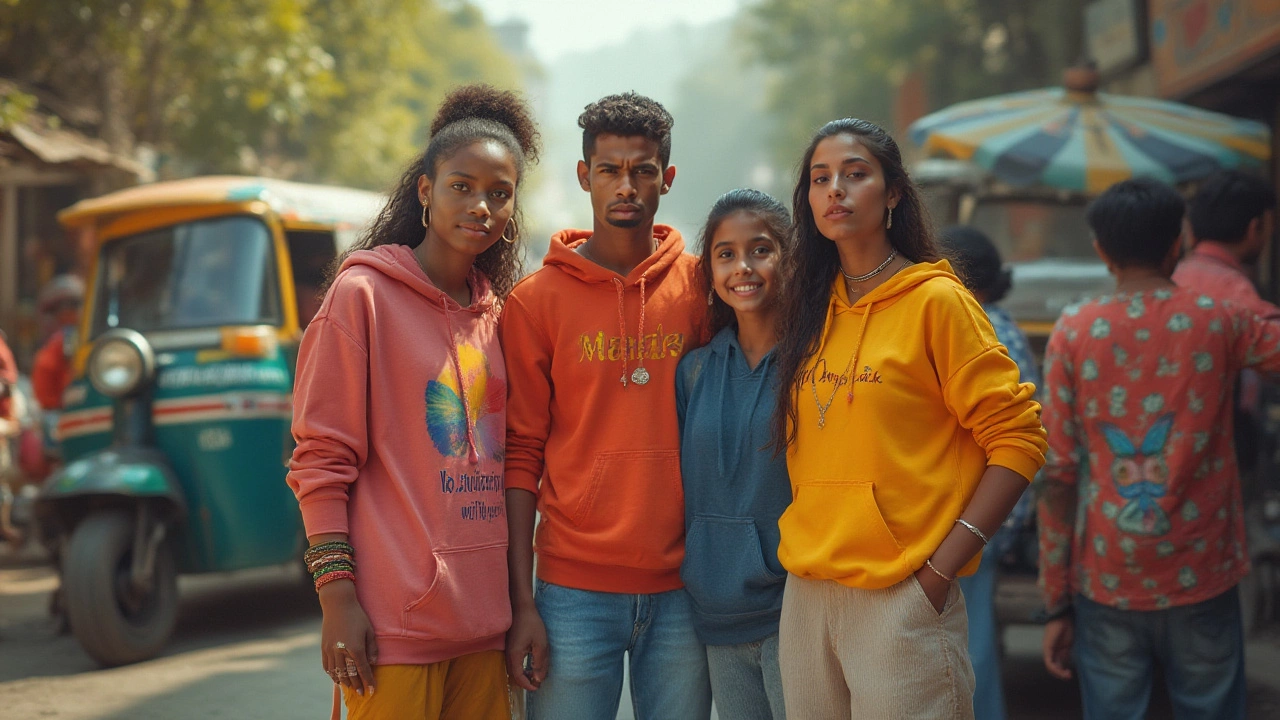Stop at any busy street corner on a sweltering July day, and you’ll spot at least one person confidently sweating under a hooded sweatshirt. It looks uncomfortable. Maybe a bit odd. But there they go, hoodie up, even when the mercury’s been stuck at 90 for hours. Hoodie culture is everywhere, from athletes grabbing their morning coffees to artists hanging around downtown, and it’s definitely defying the weather forecast. So what’s the deal—do they know something you don’t? Why isn’t everyone sticking to tank tops and shorts when the air itself feels like a sauna?
The Psychology and Self-Expression Behind Wearing Hoodies in the Heat
Let’s talk about comfort, but not the kind you measure in temperature. Hoodies are like a security blanket you can walk around in—a shield against the world’s weird looks, harsh comments, or even the unwanted air of judgment. People use their clothes for self-expression, and the hoodie, with its loose fit and mysterious vibe, is the ultimate statement piece. You might guess that wearing a hoodie on a hot day is just a fashion faux pas, but it’s often about showing confidence, creating a signature look, or simply hiding bad hair days (as anyone who’s had morning hair can attest).
There’s a psychological comfort there, too—think about the way we wrap up in a blanket when we’re stressed. Hoodies offer a physical barrier, giving you personal space in a crowd. A study by the University of Hertfordshire found that teens wearing hoodies reported feeling safer and more in control of social interactions, not just in winter, but year-round. That feeling doesn’t dissolve in the summer heat—if anything, peer pressure and self-image issues can make people gravitate toward these safe cocoons more often.
Then, of course, there’s identity. For subcultures—skaters, grime artists, even tech geeks—the hoodie signals you’re part of the tribe. Brands know this. Limited-run drops from Nike, Yeezy, or Supreme sell out in minutes, weather be damned. For many, rocking the newest hoodie isn’t about practicality but about being seen (ironically, while hiding beneath a hood). Summer is prime time for music festivals, urban sports, and late-night hangouts—all places where your choice of hoodie says something about who you are, regardless of how hot it gets.

Practical Reasons: Protection, Fabric Choices, and Surprising Benefits
This trend isn’t just about vibes and statement pieces. There’s some smart, practical thinking behind it. First off, sun protection matters—maybe more than most folks realize. According to the Skin Cancer Foundation, over 90% of nonmelanoma skin cancers are the result of excessive sun exposure. While there’s sunscreen, not everyone wants greasy cream smeared all over, especially if you're outdoors for hours. Hoodies, especially those made from lightweight, breathable fabrics, can block harmful UV rays. It’s not uncommon to see outdoor workers and hikers wearing long sleeves or hoodies in the blazing sun too, covering up instead of stripping down.
Fabric technology helps here. Years ago, a hoodie in July meant a guaranteed sweat fest. But modern hoodies often use moisture-wicking synthetics or ultra-thin cotton blends. Companies like Uniqlo, Patagonia, and Lululemon market summer hoodies with quick-drying, cooling, and even *anti-odor* properties—stuff that would blow your high school gym hoodie out of the water. Check the label: lots of these will have a UPF (Ultraviolet Protection Factor) rating, so you can literally measure how much sun gets blocked. Here's a quick look at how some fabrics stack up:
| Fabric | Avg. UPF Rating | Typical Use |
|---|---|---|
| Cotton | ~5-15 | Casual wear |
| Polyester blends | 15-50+ | Athletic, sun-safe hoodies |
| Bamboo/rayon blends | 20-50 | Sustainable, breathable wear |
| Nylon | 30-50 | Outdoor/sports |
Now, about sweat. This one surprises people: covering up can actually keep you cooler in some cases if the fabric traps a layer of moisture that slows dehydration or if it physically blocks a hot wind. We’ve all seen desert nomads wearing long tunics or robes—there’s ancient wisdom here. Wearing a hoodie stops your skin from direct exposure, which may help you feel less sunburned and more comfortable (at least until you find some shade). Got tattoos you want to protect? A hoodie saves faded ink—and makes touch-ups less frequent.
Hoodies also lower the risk of heat rashes or dirt sticking to sweaty arms if you’re skating, running, or just caught in a dust storm on public transport. Some folks use the hoodie as a tool for privacy: headphones go in, hood goes up, and the world can wait. Others use it as a wearable towel for surprise rain showers or for long, sticky commutes where public seats aren’t exactly pristine (keeping your skin off sticky plastic is *chef’s kiss* smart). Many Muslim women opt for lightweight hoodies as a modest, practical option for covering up, too.

Style Trends, Pop Culture, and Hoodie Hacks for Hot Days
The hoodie has become more than just workout gear or “throw-on-for-laziness” wear. It’s a fashion staple that’s taken center stage in pop culture for decades. Watch any music video from the past 20 years and you’ll spot hoodies in beach scenes, clubs, even crowded summer block parties. The reason? It’s versatile and instantly cool—famous faces like Billie Eilish, Justin Bieber, and Drake have made the summer hoodie a statement. Brands are riding this wave, dropping summer editions with pastel colors, cropped silhouettes, and ultra-thin materials. The world’s biggest streetwear forums blow up every time a new hoodie collab drops, hot weather be damned.
This isn’t just celebrity influence, though. Gen Z and younger millennials are looking for gender-neutral, functional pieces. According to a 2023 Vogue survey, more than 70% of teens reported owning at least three hoodies, and half said they wear them “year-round, no matter the weather.” Thrifting and upcycling have added fuel to the hoodie fire too—vintage pullovers, oversized cuts, and wild graphic prints turn heads on humid pavement.
If you’re tempted to join the club but worried about melting, here are some smart tips:
- Pick a hoodie with mesh side panels or vented armpits—sounds weird, works wonders.
- Look for hoodies labeled "breathable," "moisture-wicking," or “lightweight summer blend.”
- Try a half-zip or one with a deep neck cut so you can air out when needed.
- Stick with lighter colors—navy and black trap heat, while white, beige, or pastels reflect light.
- Wear loose, oversized cuts instead of ones that are snug. You want airflow between fabric and skin.
- Layer over a tank top or technical tee so you can shed layers if you overheat.
- Flip the hoodie inside out if the soft lining feels cooler on your skin.
- Toss a hoodie in the freezer for a few minutes before heading out. It stays cool for a surprising amount of time.
- Hydrate like crazy—hoodies in summer work best with a chilled water bottle at your side.
If you love the way a hoodie looks or just like the privacy, don’t sweat it (figuratively, at least). The number of people wearing them on a hot day isn’t going down anytime soon. In fact, as long as brands keep rolling out fresh summer hoodies—with technical fabrics, wild prints, and street cred—expect to see even more of this trend out in the heat. Next time you spot someone zipped up in July, just remember: they’re not being weird. They’re probably making a personal choice—one that’s fashionable, functional, and a little bit bold.

